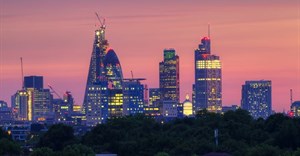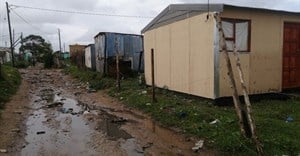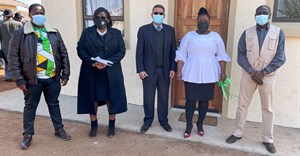
Subscribe & Follow
Jobs
- Senior Graphic Designer Johannesburg
- Senior Designer Sandton
- Multimedia Designer Cape Town
- DTP/Design Co-ordinator Benoni
- Graphic Designer and Videographer Centurion
- Multi-Media Designer Durban
- Senior Brand Designer Cape Town
- Digital Designer Cape Town
- Part-time Graphic Designer Cape Town
- Experienced 3D Generalist/VFX Artist Johannesburg
Hope, housing, heritage - towards the densification of Cape Town
Future Cape Town @futurecapetown, of the big blue square logo, was the host of the Mini-con Bold Cities session, held Saturday 24 August at the City Hall as part of the event. It is an independent platform started by Rashig Fataar @rashiqfataar, who apart from actually being an actuary, is also passionate about promoting the Cape Town he wants to help create.
It's not to be confused with The Cape Town Partnership @ctpartnership, a non-profit company dedicated to the coordination and promotion of urban development in Cape Town, which is partially funded by the City of Cape Town and the Western Cape Government and whose influence ranges from the city improvement districts and safety to transformative design.
Presenter Andrew Fleming @AndrewSFleming, is Senior Researcher at the above, tasked with looking at new housing models that can succeed in building stronger neighbourhoods that encourage enterprise.
Urban corridors is a new term used to describe the type of town planning that will ensure greater numbers of people will have greater access to economic opportunities via the repurposing of Cape Town's geographic and social inequalities. The Voortrekker Road Corridor VRCID, http://vrcid.co.za/, is one such project that is eliciting much attention from urbanists, architects and developers and has the backing of the city, as having ideal conditions and the location necessary to empower a larger number of Capetonians with accessibility to economic opportunities and infrastructure.
Benita Bennet is the Director of the world-renowned District Six Museum in Cape Town. During the course of her presentation she showed images taken during the ongoing consultation processes, memory walks and other activations with District 6's dispossessed, in their unenviable task of finding solutions to some sort of recovery and redevelopment in the area.
The BIG ISSUE, the elephant in the room one might call it, in development planning in Cape Town at the moment, is that of densification versus dispersal, with the much decried Wescape mini-city proposal near Melkbosstrand on the one hand and all manner of ideas on how to sustainably bring more life into the city via densification policies on the other.
To you or me, densification may seem easy as converting degraded, empty commercial spaces into residential spaces, adding a few public parks and a few more buses, as seems to be accomplished everywhere else in the world from Brooklyn to Bogotá.
Our reality is a cocktail of policy implementation systems and bodies that assess the viability of land available for housing developments, whether nationally owned such as Culemborg, which is owned by PRASA, www.prasa.com/, locally or privately owned tracts.
Add into the mix all manner of design activists, public interest and community consultation groups especially those with Cape Town in their name, such as Open Design Cape Town, www.opendesignct.co.za, Creative Cape Town www.creativecapetown/, Accelerate Cape Town, www.acceleratecapetown.com etc and you can start to get an idea of the current frustration and furore going on behind the scenes with regard to transformation solutions for new housing and other developments.
New activists on the block Openstreets Cape Town, OSCT http://openstreets.co.za/, is "a citizen-driven initiative, working to design and promote streets which embed and generate respect for people, regardless of who they are, and how they move." They are inviting you to tweet your wish for Cape Town to @OpenStreetsCT with the hashtag #streetwish.
Instant densification, just add water
One of the key voices in all the debates about all things future Cape Town is Mokena Makeka, @Archforce_MM007.
Makeka seems to be like the hub to whom all parties with an interest in densification gravitate. He has done the math - if Culemborg does prove to be viable for new socially sustainable housing it would accommodate 40-50,000 people, District 6 another 30,000, 120,000 down the Voortrekker corridor and Voila!, we have the additional 200,000+ people needed to create a thriving, vibrant, creative city and justify the investment in our Integrated Rapid Transport system, IRT. Instant densification, just add water.
Makeka Design Lab www.makekadesigns.com/ has rendered impressive visuals of what could be accomplished, restitching the cities concourses to finally accomplish the long sought, post-apartheid geographic for what has been billed as the World's most unequal city.
As a born-and-bred Capetonian, I'm willing to bet that Makeka and his acolytes bandying the phrase "density before heritage" about, is not likely to endear many decision makers to their cause. Why does it have to be one or the other? What does it mean to a city, which has lost it's old Pier, it's beaches and access to its ocean due to reclamation of land, most of its historical Adderley Street buildings and had its heart ripped out in District 6?
I think it means that any solutions we propose should be a little bit less incendiary and a little more about providing prostheses for a city already mutilated almost beyond repair.
I know it must be frustrating, but despite the intelligence of the thinking, the elegance of the artist's impressions, the pressing need to redress the imbalances of the past, in pursuit of densification I believe a little bit more sensitivity to context and a little less Star Trek, might be in everyone's best interest.
I don't know if they just don't teach it at UCT, but context - whether natural, social, historical or cultural - has never been high on the list of architectural objectives in Cape Town, and this is a mistake we cannot afford make again.
I couldn't agree more with Makeka, that Cape Town needs iconic architecture such as the Bilbao's Guggenhiem Museum by Frank Gehry, and heaven knows the CTICC was a missed opportunity, but why propose a development on top the already lovely Lutheran church in Strand Steet, when there are countless better positioned hideous, decaying and under-utilised buildings in Cape Town that could make way for his style of iconic architecture? See www.iol.co.za/stop-praying-at-the-altar-of-the-past .
I hate to break it to you, guys, but the World Cup was in 2010, the route mapped out for the Fanwalk was not sustainable, get over it. Would it not be much more democratic to provide an upgraded experience for the long-suffering, regular Adderley Street and Grand Parade pedestrian than the occasional stray Fanwalker?
Perhaps the only problem with the architectural and housing debates currently raging in Cape Town is a lack of focus! Talking about densification in one breath, iconic buildings, transport museums, urban edges and corridors the next, may not be a convincing enough hedge against a Wescape juggernaut.
In the very short term, putting the city and not our own agendas first, prioritising one or two groundbreaking projects with a clearly stated outcome and putting the right teams in place to implement them successfully is probably what a World Design Capital would do and from which all players, stakeholders and most importantly citizens would benefit. #streetwish.


















